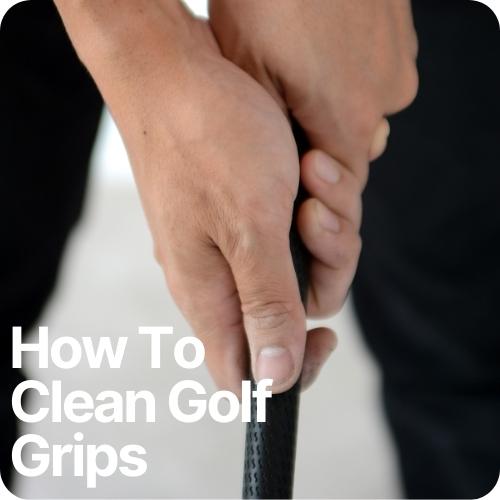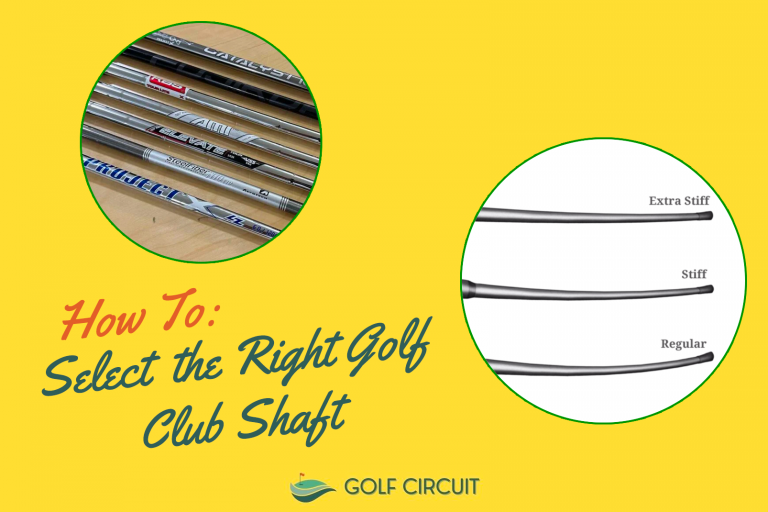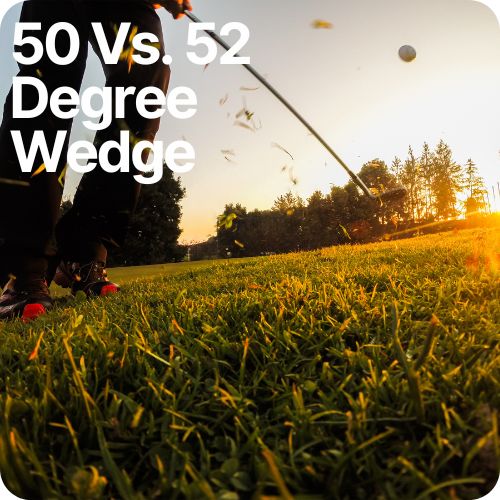Blade vs Mallet Putter: Which Is Better For You?
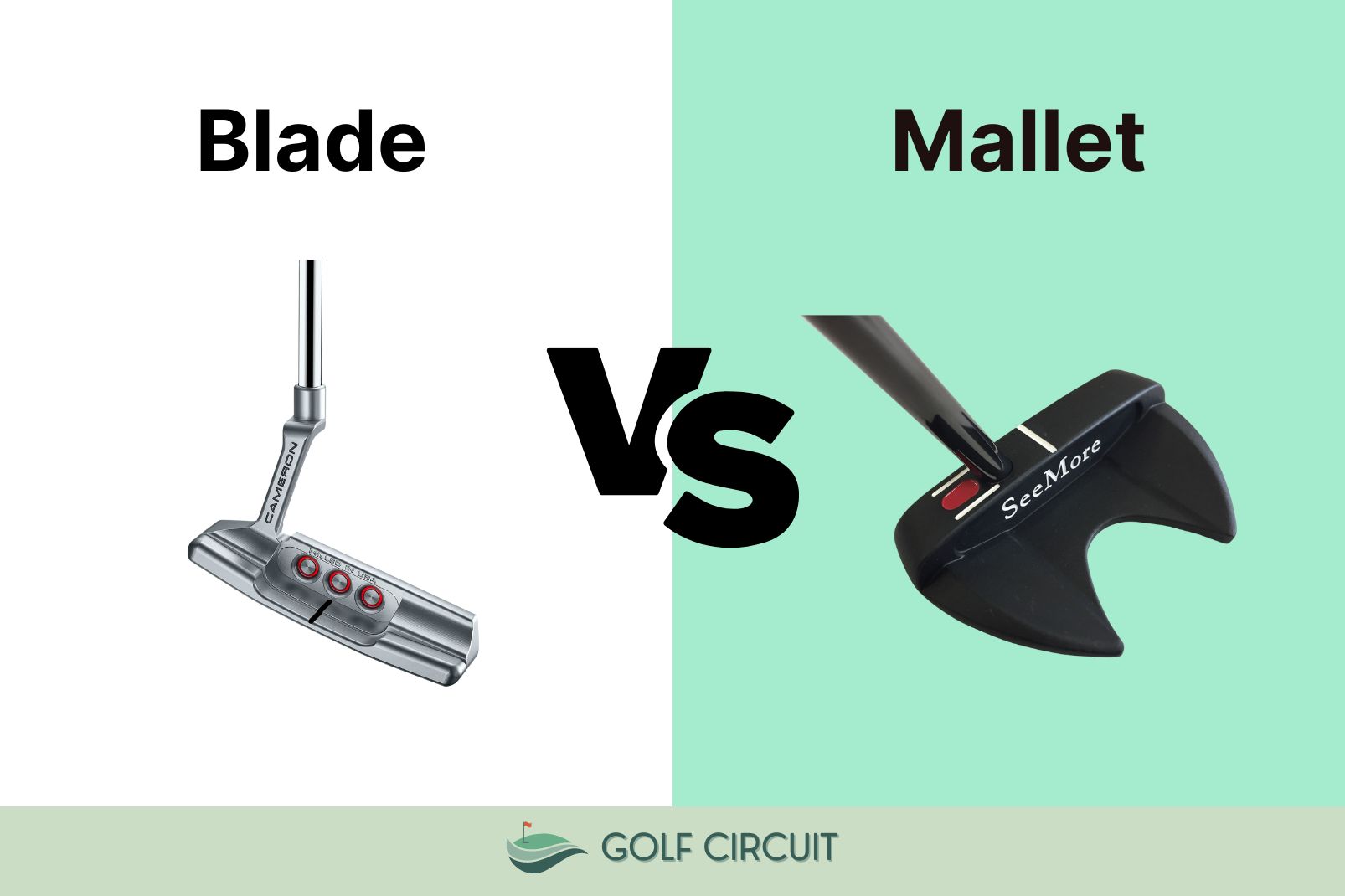
Although there are hundreds of different types of putters on the market, they can really be broken down into two separate categories the blade and the mallet putter. The blade putter is that classic smaller design known for its precision.
Mallet putters bring an entirely new level of technology that makes them incredibly unique for golfers of any level.
Whether you are in the market for a new putter or simply curious as to which design could be a fit for your game, let’s take a look at the blade vs. mallet putters.
Blade vs Mallet Putter (What Are The Differences)

The main difference between the blade and the mallet putter is its design. The blade putter has a thin head, usually rectangular.
Blade putters are small, and they are used quite often on the PGA Tour. The mallet putters of years past were a simple semi-circle shape.
However, in recent years they have become much larger with longer alignment lines and more adjustability.
General Design
Blade putters are much smaller than mallet putters. They have a clean and simple look to them, as opposed to the more rounded and often complicated design that you see in the mallet putters.
Both blade and mallet putters can have similar face technology. Many of the blade style putters are milled and created out of one piece of metal.
The mallet putters often have inserts and are pieced together with a variety of materials including stainless steel, aluminum, graphite, and maple.
Distance Control
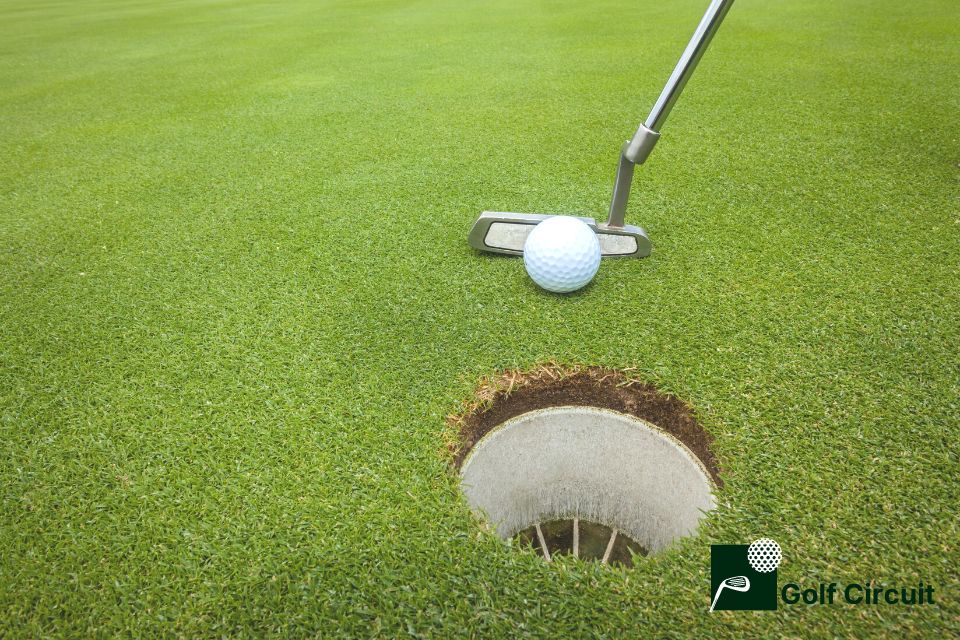
Traditionally speaking, mallet putters are supposed to be better for distance control. The classic mallet putter tends to have quite a bit of weight in the club head, which helps golfers learn how far to hit certain putts as well as having more distance control. Blade putters, like blade irons, can be equally as heavy. Fortunately, weight is something you can customize in a putter.
Some putters have adjustable heel-toe weights. If your putter does not, consider lead tape which is inexpensive and easily available. However, it makes a difference where the lead tape is positioned on the putter. Generally, a four-inch strip of lead tape adds 2 grams of weight to the head. This will affect your swing weight by one point.
The controlling distance of a putter is a learned skill. It takes time to learn to adjust to the feel of the greens, no matter what putter you choose.
Forgiveness
Most of the time, when comparing forgiveness in putters, you have to look at one specific putter model vs. another.
Mallet putters are more forgiving than blade putters in most situations because they have a larger sweet spot and more room for error. However, blade style putters from Odyssey in the new Tri Hot 5K are some of the most forgiving blades we have seen.
Forgiveness in a putter is often referred to as MOI or Moment of Inertia. The bottom line is that if forgiveness is your number one goal, a high moi putter like a mallet putter is the better fit.
Alignment
Alignment is impacted both by how a putter sits on the ground and also by the alignment lines or design on the top of the putter.
With blade putters, alignment is kept pretty simple with just a single short line. The alignment lines on the mallet putter can be longer and bolder, and sometimes, there are more than one of them.
These lines make it considerably easier for players to see exactly where their putter is lined up and how it is going to make it to the hole.
Most golfers prefer the longer alignment lines when starting out in the game. However, as your game advances, you may find it a bit distracting.
One thing we like is the way that Odyssey makes some of its Stroke Lab mallet putters. These putters often have options for the Triple Track design, a clear design on the top, or a single line.
Feel
Feel is again a personal preference; however, players that consider themselves feel type putters often go with a blade style putter.
Blade putters are a bit easier to maneuver, and because of that, you can customize the feel better.
However, the overall feel of a putter will be impacted more by its face technology than by the type of putter you are using. Look for putters with face inserts if you enjoy a softer feel.
Design/Features
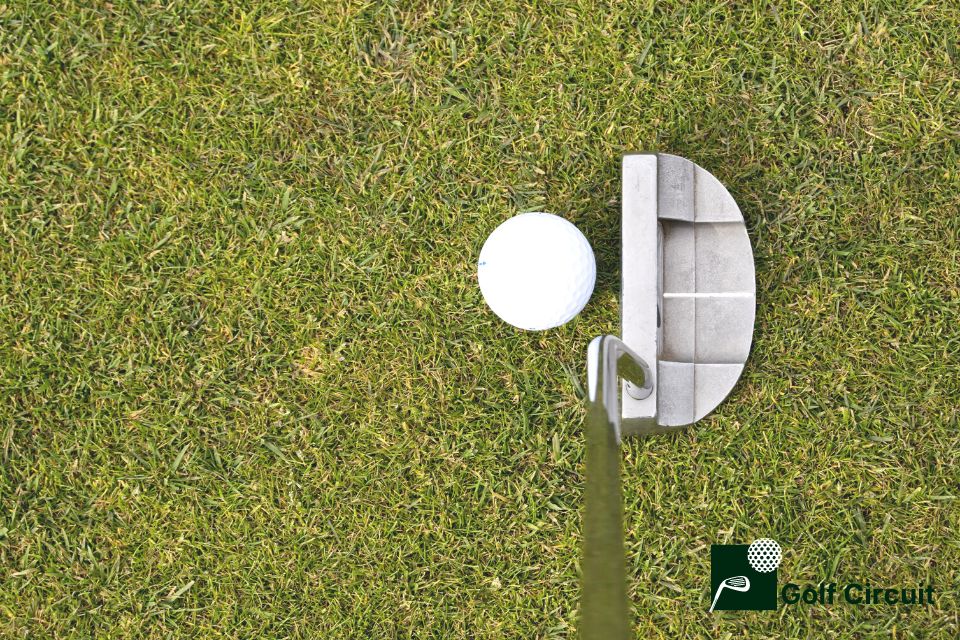
Many of the mallet style putters have a lot of technology packed into the club head. There are often moveable weights or customizable designs on the club head.
Blade putters tend to keep things a bit simpler, and this is partly why they appeal to the more traditional golfers.
The technology and design features of the blade and mallet putters tend to impact their accuracy. In some product testing that has been done, blade putters do really well from 10 feet, while mallet putters excel from 5 feet.
Again, this will also come down to the individual model of putter you choose.
Who Should Use Blade vs Mallet Putter?
As you can tell when we look through the main differences between the blade vs. mallet putter, many of the performance attributes come down to the individual putter.
Sometimes blade vs. mallet will result in a very similar performance, but certain players should be considering each putter type.
Stroke Type
The best possible way to decide between blade and mallet putters is to consider the type of putting stroke you have. If you are a golfer with a straight back and straight-through putting stroke, the mallet is a great choice.
For golfers that have more of an arc style stroke, the blade style putter seems to be best.
The putting stroke type you have will significantly impact the way you swing the putter and the way the ball comes off the clubface.
With a blade putter in your hand, it is very easy to rotate the clubface open and then get it squared up again. Mallet style putters work best when they are just kept square the entire time you swing them.
Of course, there are exceptions to this rule, and golfers play incredibly well with a mallet and an arc style stroke, but it’s not the best choice if you want to take advantage of technology and features.
Experience Level
The mallet putter is very often recommended for beginner and higher handicappers because of its high MOI.
However, newer blades are being made with a higher MOI, bridging the gap in forgiveness.
Essentially if you are a great player, find something that works well for your playing style. If you are a new player, look for a putter that claims to have a high MOI.
Budget
Many of the new mallet style putters with these large club heads are expensive. Putters used to cost around $100, and now I’m seeing them for more than $500.
A classic Scotty Cameron blade putter is certainly not cheap, but there are some basic blade putters on the market that you can still get for a great deal.
Don’t be afraid to look into used putters. As long as the face of the putter is still in good shape, this club could last longer than any other one in your golf bag.
Stance/Setup
The stance and setup you take when hitting your putts will also impact the golf putter you use. Typically people stand directly over the ball, like the mallet putter with the long alignment lines and blockier design.
If you stand a bit further away from the ball, a smaller blade design makes it easier to swing the putter a bit as opposed to keeping it straight back and straight through.
Frequently Asked Questions
Here are a few of the most commonly asked questions about the blade putter and who should be using it.
Is a blade or mallet putter better?
Do pros use blades or mallets?
What is the advantage of a blade putter?
Do any pros use a mallet putter?
Final Thoughts
With a better understanding of the difference between blade vs. mallet putters you should be able to find a putter that is a good match based on your natural putting stroke. Remember, each putter has technology that can help your game.
Going for a golf putter fitting can be a good idea since finding the proper length and height of a golf putter is just as important as choosing the correct putter head.




